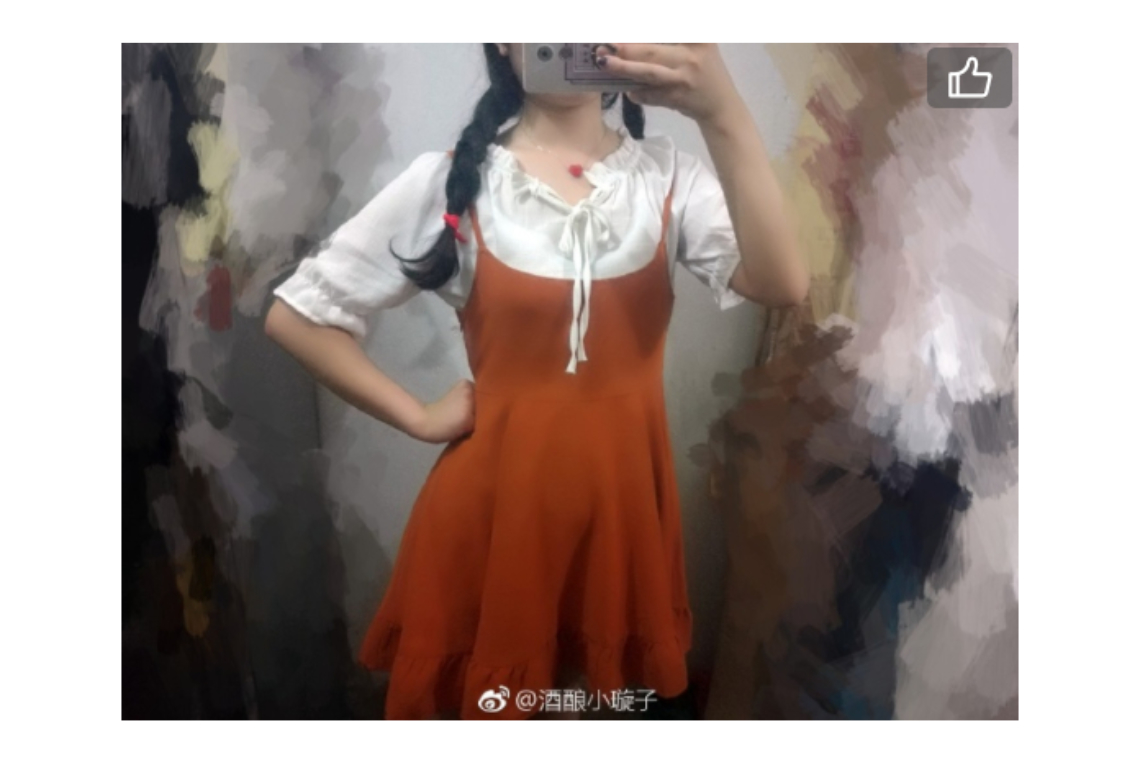Women are building real brands selling knockoff clothing
A Q&A with Sara Liao on shanzhai fashion and “women’s digital work.”

In China’s booming world of ecommerce, women really do hold up half the sky. More than 50 percent of shops on Taobao — Alibaba’s eBay-type website — are women-owned, and evidence indicates a similar ratio on WeChat’s burgeoning social commerce platform. These female entrepreneurs are succeeding in a variety of businesses, but within the digital trend in women’s work is a vast gray market that operates at the margins of legality and involves an untold number of women entrepreneurs — shanzhai fashion.
Akin to the notorious shanzhaiji (山寨机 shānzhàijī), a cultural phenomenon of domestically produced, copycat cell phones, shanzhai fashion is an industry of imitation where designers re-create and sell everything from high-end global brand names and Western fast fashion to cult Japanese and Korean designers. But unlike in the shanzhai tech industry or the mainstream fashion industry, women dominate shanzhai fashion. Essentially, it’s a market created for fashionistas by fashionistas. And more than just hawking fakes, shanzhai’s female entrepreneurs have built brands around their own images, presiding over large social media followings where they market their own fashion sense, publish selfies and fashion advice, and constantly seek feedback from their followers.
Yet just like the bandits and rebels of Chinese lore who took refuge in shanzhai (山寨 shānzhài), “mountain strongholds” outside of imperial command, these women operate on the margins of legitimacy, skirting around intellectual property infringement laws and subject to frequent crackdowns from the industry’s preferred ecommerce platform, Taobao. This leaves them in a precarious situation and bars them from mainstream entrepreneurial success, argues Sara Liao, an academic originally from Guangxi, China, who has spent the past two years researching the industry and interviewing shanzhai designers.
Liao took time out from finishing her dissertation, “Fashioning China: Precarious Creativity of Women Designers in Shanzhai Culture” (previewed here), at the University of Texas at Austin’s Moody College of Communication to talk shanzhai fashion with The China Project. (The following conversation has been edited for length and clarity.)
SM: Let’s start with your own motivations. Why did you decide to focus your doctoral research on the female designers of shanzhai fashion?
SL: I’m of the generation who started to use the internet for shopping in China, so I have followed shanzhai fashion for quite a long time, even before it was called this. Over these years, I observed how mainstream discourse will glorify the grassroots, innovative capacity of shanzhai especially in shanzhaiji — in the shanzhai cell phone industry. But they never talk about the same thing in this woman’s practice of shanzhai fashion. Even though these women designers actually practice the same idea, to create one’s own version, they never get the status or recognition of other industries. That is one thing that really triggered me to study this phenomenon.
(For more on shanzhaiji and the Chinese dream, check out a Sinica Podcast with Fan Yang)

SM: So who are the women behind shanzhai fashion design?
SL: Generally, these women designers are the post-1980s generation, which means they are often the one child in the family and are part of the generation that has a lot of knowledge about the internet and social media. Most of them don’t have any professional training in fashion design; a lot of them just claim that they began this work because they really love sharing their experiences with fashion. The majority are college educated, have their full-time job, and just start their shanzhai business as a part-time hobby, eventually finding out they can make money through it and quitting their full-time job. They also normally work with their families, and many of them will have family members who are already working in garment production or the textile industry or who own factories. Even though the majority of the shanzhai fashion producers are women, many are highly reliant on their boyfriends or husbands to carry out the technological conventions and business management. The industry is unlike the conventional fashion world that is dominated by men, yet these women designers do constantly articulate gendered work in their production.
SM: How will a designer decide what products or looks she wants to “shanzhai,” and what happens next?
SL: Shanzhai fashion is often initiated by consumers. A consumer might recommend her favorite styles or looks of the current season, and then the designer will set up a poll on social media that features some of these highly prized products and invite her social media followers to vote for one or two. After they select the style, the woman designer will purchase the original product and make several sample versions, updating her consumers on which parts she’s modifying. For example, maybe “I will substitute one material for another,” maybe “I will have two versions, one is a long-sleeved one, is short-sleeved, or sleeveless” — things like that. She’ll ask consumers for their opinions, and finally have a final sample version that goes into production.
But the consumption cycle does not stop there — the consumers are also producers. When they receive the product, they will do some modeling themselves in those products and take some selfies. Some women designers give some cash bonuses or discounts to encourage their consumers to post their selfies. These consumers love to do so because then they can comment and provide some feedback for the designer; they like to see the woman improve over time. It’s a whole circuit of production and consumption.
SM: What are the advantages of this “digital labor,” as you call it, that encourage women designers to choose this path?
SL: Digital labor in my study refers to both material and immaterial aspects of the work done by these women — they not only produce physical products such as clothes and accessories, but also create information, content, and knowledge that add to the circulation of their fashion experience among their fans. Shanzhai women designers feel like digital labor empowers them both to do more of this creative fashion work and to have the flexibility to manage their families.
But for these women, work-life balance is a myth. Digital labor actually requires them to do more work. When they had a 9-to-5 job, they might be able to negotiate with their family members to share household duties. Now, since they can work a full day at home with their laptop, they are expected to do all the chores and laundry, prepare dinners, pick up kids, and so on and so forth. In other words, the seeming flexibility and autonomy amounts to endless working.

SM: What are the risks involved in shanzhai-ing fashion products?
SL: In China, if you are copying a certain fashion design, particularly those ready-made garments that emphasize practical functions over aesthetics, without attaching the original brand name or the trademarks or anything, you will be fine and free to copy. It is the same situation in the U.S.; imitating this popular fashion design won’t get you in trouble with copyright infringement. But the point here is that the aura of these global brands is essential for the designers to attract consumers, especially for the luxury brands, which people buy not only for the look but for a sociocultural status. Therefore, some designers are pushing the boundaries by putting the logos on the products or using the copyrighted images from the original brand. That might get them into trouble — if they use the original logo or trademarks of the original brand, Taobao will monitor it, take off those products, and either give a warning to the shop or completely shut it down. Woman designers then might just open up a second shop and inform their consumers via WeChat or Weibo — it happens so frequently.
SM: What kind of reputation does shanzhai have in China?
SL: The designers tell me that nowadays, the social attitude toward it is more ambivalent and more toward the pejorative side — people feel like it’s inferior quality, ruins the reputation of China-made products, and also destroys the consumers’ taste of fashion. So on Taobao, the platform where many of these designers set up shop, they won’t say it’s the shanzhai version, rather, they will call it “self-made” or “customized.” They also strategically deploy these terms to avoid any infringement of intellectual property rights, because Taobao has strict rules. On Weibo and WeChat, you will see more freedom to use the term. Designers will say, “Should we start to shanzhai this?” Or when a consumer recommends a certain style or look they want copied, they will say, “Could you shanzhai this?” I feel this usage, as a noun and a verb, does not have any particular positive or negative connotation, it’s just part of the language, it’s more about the practice itself.

SM: You write that these women are living an “impossible Chinese dream.” What is the “Chinese dream” and why is their version impossible?
SL: The “Chinese dream” is a term officially raised by President Xi Jinping in November 2012. This dream discourse first emphasized the national rejuvenation — to make China a great cultural power largely through creativity and innovation. But more and more, it is turning to the individual part of the dream, in which the dream isn’t the people’s dream, it’s the individual’s dream. It’s also a post-socialist dream, no longer emphasizing the socialist promise of equality or subsuming gender under class struggle. It’s the very first time in Chinese history that the state encourages people as individuals to pursue their own dreams, to pursue their own growth and prosperity, as long as it conforms to the national branding campaign.
Women designers aspire to pursue this dream, but they are not recognized as innovative, grassroots creatives, in contrast to the male-dominated shanzhai technology sector. The general public rejects them because they perceive their production as something with inferior quality that connotes the pejorative, cheap Asian labor. The state does not recognize their innovation because their copying practice does not fit into the state’s narrative of protecting intellectual property rights, and only occupies a gray market.
But these women do not stop dreaming their own dreams — a better life, more kids, sustaining independence with a passion business. A lot of them continue to dream their own Chinese dream, but the situation has made it impossible for them to be counted as legitimate Chinese dreamers. Therefore, I call them “impossible Chinese dreamers.”





